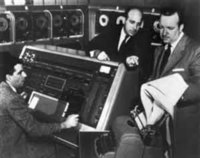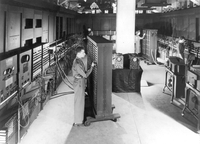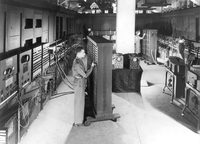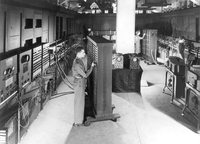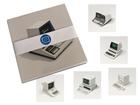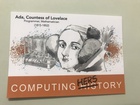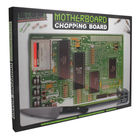Work begins on ENIAC
|
9th April 1943 During World War II, the U.S. military needed to calculate artillery-firing tables quickly and accurately. Performing this work manually was slow, using large groups of women working with mechanical desktop calculators. The Ballistics Research Laboratory, the military department responsible for these artillery tables, approached the University of Pennsylvania's Moore School of Electrical Engineering for help. They wanted a machine that was fast enough to calculate their artillery-firing tables automatically. On April 8, 1943, Eckert and Mauchly submitted their proposal for a machine to the Ballistic Research Laboratory. This proposal was titled "Report on an Electronic Difference Analyzer". On April 9, 1943, Eckert's 24th birthday, the Army approved the proposal, and work on the ENIAC began under the code name "Project PX". On June 5, 1943, contract No. W-670-ORD-4926 was signed between the Trustees of the University of Pennsylvania and the U.S. Army Ordnance Department. The contract referred to the machine as an "Electronic Numerical Integrator”. Because the machine could also tackle more general problems, the name was later changed to "Electronic Numerical Integrator and Computer", or ENIAC. ENIAC was not completed until after the war, finally being announced to the public in February 1946. Related information:
Image:
Related Items in the Collection:
|
Click on the Images For Detail
|

